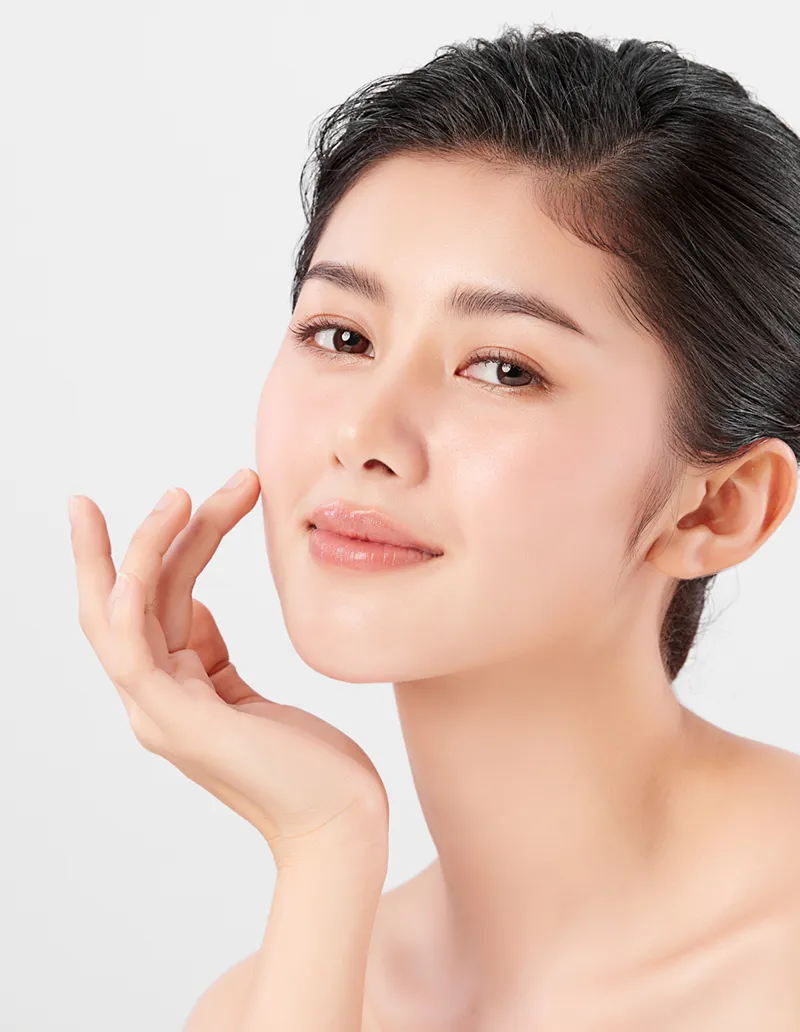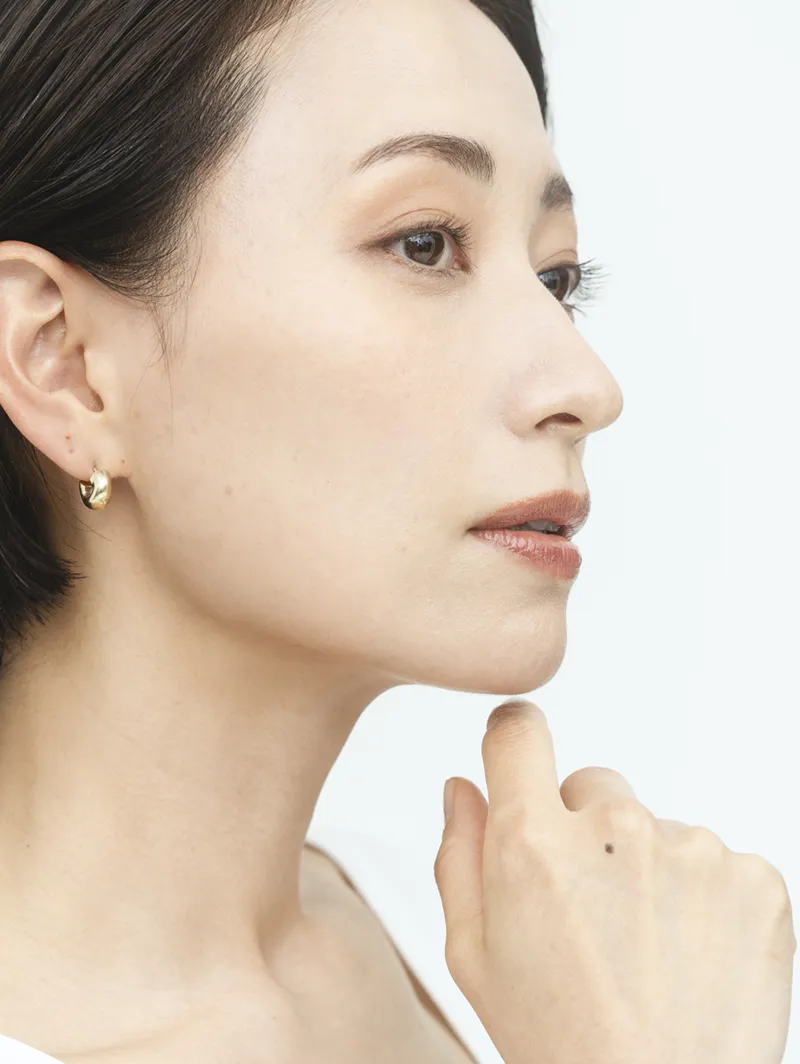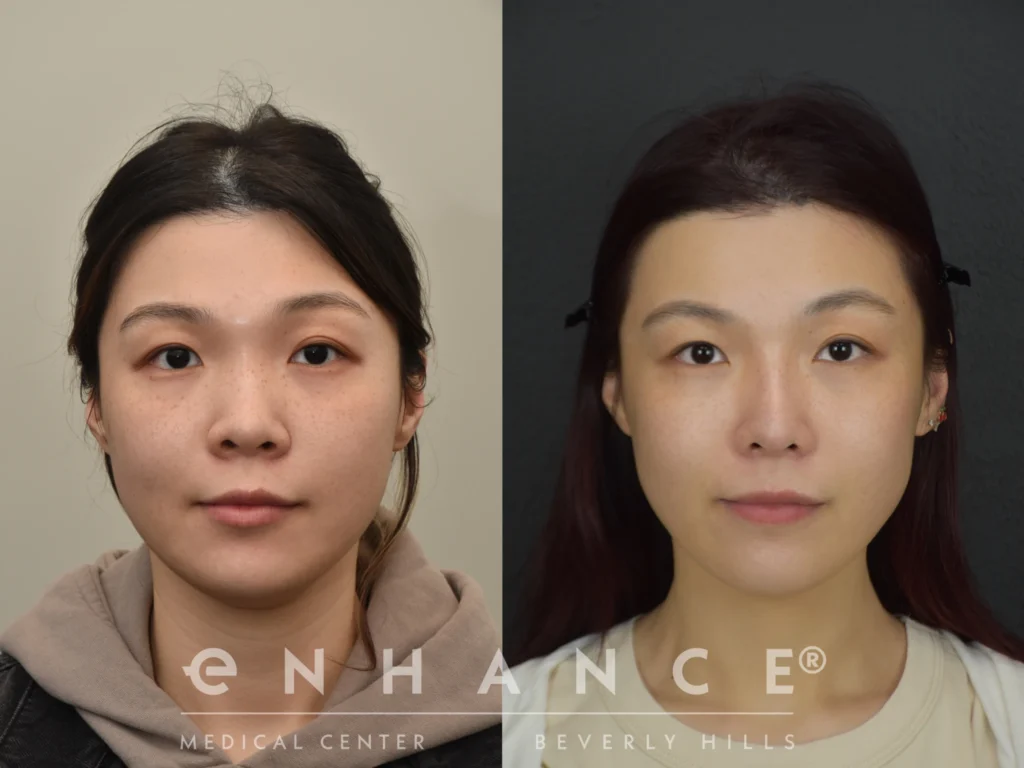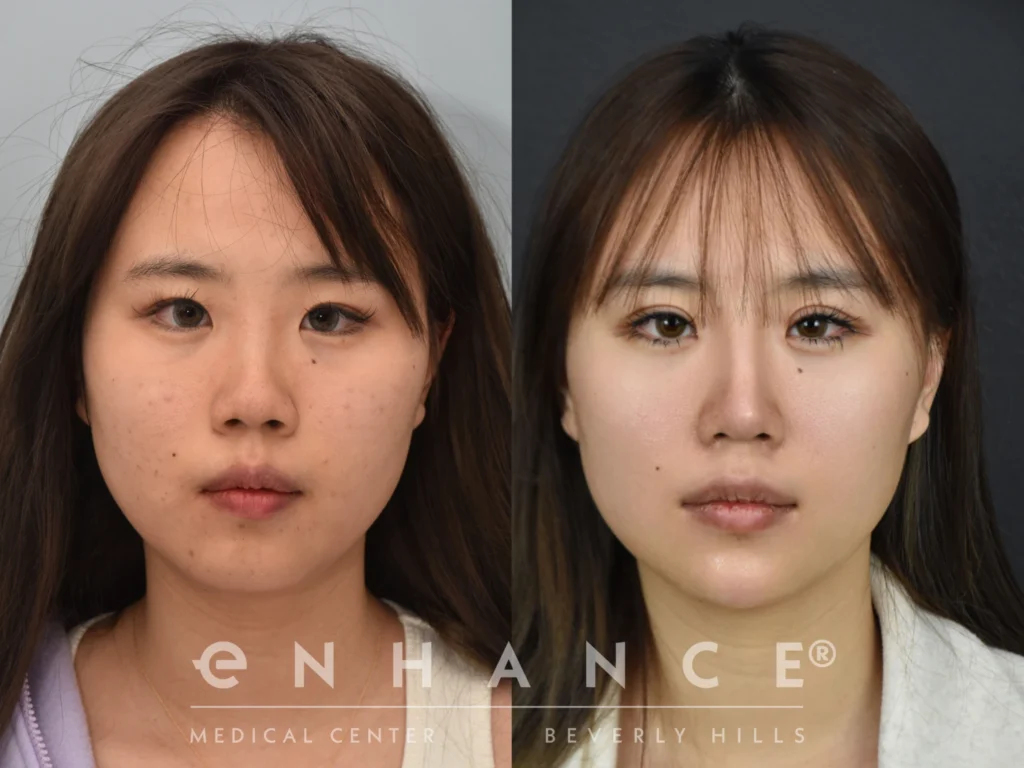Asian Rhinoplasty in Beverly Hills, CA
Overview
With first impressions being so powerful in today’s society, rhinoplasty, or nose surgery, should be customized to produce the best results for each patient. Due to ethnic differences, including cultural beauty standards, rhinoplasty cannot be approached in the same way for Asian patients as it is for Caucasian patients. Dr. Charles S. Lee is a board-certified plastic surgeon who has performed over 2,000 rhinoplasty procedures to help Asian patients who want to improve the appearance of their noses. As a specialist in Asian cosmetic surgery, Dr. Lee can suggest specific Asian rhinoplasty techniques to adjust the nose so that it flatters the Asian face in its natural beauty. Typically, Asian rhinoplasty involves making the nose larger to be well-balanced with the other facial features.
Benefits of Asian Rhinoplasty
Natural-Looking Results
Many of the changes a typical rhinoplasty surgeon might make to a Caucasian nose are not ethnically compatible with the Asian face. Dr. Lee uses his experience and expertise as an Asian rhinoplasty surgeon to improve the appearance of the nose in such a way that it looks balanced and natural with the rest of the facial features.
Customized Improved Nasal Appearance
Asian rhinoplasty can modify the appearance of the nose so that it looks more attractive to the patient. Some of the ways in which rhinoplasty can match a patient’s aesthetic goals include:
- Balanced width
- Built-up nasal bridge
- Improved nasal definition
- Reinforced nasal tip
- Adjusted nostril width
Better Facial Balance
It is common for many Asian patients to believe their noses to be too wide or lacking sufficient projection. Asian rhinoplasty can restructure the nose and reinforce the bridge, tip, and nasal definition. As a result, the nose will blend well with the face, and all the facial features will be harmoniously balanced.

What Do You Desire?
Strong Nasal Bridge
Many Asian noses have a flat nasal bridge. Dr. Lee uses all-natural tissue to build up the nasal bridge to be as strong and defined as a patient wishes. Dr. Lee may use a small amount of rib cartilage to reinforce the nasal bridge for a patient who requests more dramatic changes to their nose.
More Prominent Nose
To better balance the width of the Asian patient’s face, an Asian rhinoplasty procedure can enlarge the nose. Dr. Lee will restructure the nose to lengthen it to appear more symmetrical and proportionate to the eyes, cheeks, and mouth.
Improved Nasal Tip
If a patient thinks the cartilage of their nasal tip is weak, it can be reinforced with tissue from the nasal septum. Dr. Lee may also consider using tissue from the back of the ear to improve the nasal tip. The ear will return to normal shape within a few days after the procedure. For more dramatic changes, larger amounts of cartilage may need to be obtained from the rib using a small incision.
Narrower Nostrils
When reinforcing the tip of the nose with Asian rhinoplasty, there is a slight narrowing effect of the nostrils. If more narrowing is desired, Dr. Lee can surgically alter the shape of the nostrils to be more aesthetically pleasing.
Correct a Deformity or Injury
Nasal deformities or injuries can be treated with rhinoplasty. Dr. Lee can perform the appropriate surgical techniques to restore a balanced, natural, attractive-looking nose free of signs of deformity or injury.

Concerns About Asian Rhinoplasty
Recovery
A splint will be attached to your nose for about one week after a rhinoplasty procedure. Shortly after the splint has been removed, you should be able to resume light daily activities and return to work. Any tenderness or bruising should fade away within three weeks. Some swelling may be detectable for up to three months after your procedure.
Scars
Much of Dr. Lee’s rhinoplasty techniques allow him to avoid any visible patient scarring. Depending on how much correction is needed, a slight incision may be necessary in an inconspicuous location at the base of the column of tissue between the nostrils. Over time, this scar will fade. If cartilage is grafted from the ear, the scar will be hidden behind the ear. Any scarring from rib grafts will be short – just one to one and a half inches – and will fade with time.
Cost
The cost of Asian rhinoplasty with specialist Dr. Charles Lee will vary from patient to patient, depending on their corrective needs and whether cartilage grafts from the ear or rib will be needed. You will receive a price quote at your consultation with Dr. Lee.
Pain
Our physician-anesthesiologist provides patients with anesthesia so that they are entirely comfortable during the procedure. Some tenderness, bruising, and swelling can be expected after the procedure, but pain medications can help you manage your discomfort until these side effects wear off.

Frequently Asked Questions About Asian Rhinoplasty
Where is the procedure performed?
Rhinoplasty surgery with Dr. Lee is generally performed in our state-certified operating room.
What kind of anesthesia is used?
In most cases, general anesthesia is necessary to protect the airway during rhinoplasty. In procedures limited to the nostrils, IV sedation is sometimes possible. For general anesthesia, our board-certified physician-anesthesiologist will administer your anesthesia to provide you with the highest level of care.
When is it necessary to use a rib graft in Asian rhinoplasty procedures?
Dr. Lee prefers to use the patient’s own rib for remaking the nose. Alternative sources such as the ear or septum can sometimes be used, but this is often inadequate for the task at hand. A donated rib is considered inferior to one’s own rib. Rib cartilage is obtained from a 1″ breast crease incision, and a 72-hour nerve block is used to minimize discomfort.
What are some common errors seen in Asian rhinoplasty?
Some common reasons exist as to why patients come for revision rhinoplasty. For example, a surgeon may surgically narrow the nostrils (creating a pasted-on appearance), use an implant on the tip (which can shift and become visible), or unnecessarily break the nasal bones (which can lead to uneven bone position or an unnatural flow to the nasal contour). In particular, the nasal bridge and nasal tip are often mistreated by poor techniques when it comes to Asian noses and rhinoplasty.
In an effort to reinforce the nasal bridge, sometimes it is made overly large. An Asian nasal bridge begins around the level of the eyelashes or lower and has a slight break between the forehead and the start of the bridge. If surgeons ignore this essential physical characteristic, the result can be an overly prominent nose. This looks unbalanced and unnatural on an Asian face.
Another common mistake is removing cartilage from the nasal tip to make it more narrow. A weak nasal tip in an Asian nose is usually not the result of excess cartilage (as with Caucasian noses) but rather is a sign that the cartilage itself is weak. Removing cartilage or using sutures to fold the tip into the appropriate shape will ultimately fail. Instead, the tip should be bolstered with additional cartilage from the septum or from the ear to reinforce and project the nasal tip upward, like propping up a tent.
What are the advantages of using all-natural tissue in Asian rhinoplasty?
Some bodies do not respond well to silicone, Gor-Tex, and other foreign body implants. Recent advances in Asian rhinoplasty allow Dr. Lee to build up the nasal bridge and tip without using foreign substances. Therefore, there is little risk of implant rejection. Rib grafts are occasionally necessary to build up the nasal bridge, but in many cases, Dr. Lee can successfully use natural septal or ear cartilage to build up the nose.
When will I see the final results after my procedure?
Your final Asian rhinoplasty results can take several months to one year to reveal themselves. Over this time, you will observe slight changes and improvements as your nasal tissues heal and settle into their refined shape and position.
Can Asian rhinoplasty preserve my ethnic identity while improving my nose’s appearance?
Yes. The most important thing a plastic surgeon should consider when performing rhinoplasty on non-Caucasian patients is that what works for a Caucasian patient will often not look natural on an Asian patient. The structure of the nose and facial characteristics of different ethnicities will dictate how the procedure is performed and the end result.
Dr. Lee’s skill and experience in Asian rhinoplasty have made him an expert in addressing the common concerns of his Asian rhinoplasty patients. His goal is to allow your uniquely Asian facial characteristics to shine through while creating harmony and balance between your nose and the rest of your face.
How is Asian rhinoplasty different from conventional rhinoplasty?
The goal of Asian rhinoplasty is typically the opposite of the goals of a conventional rhinoplasty. Traditional rhinoplasty is designed to adhere to Western beauty standards, which usually means a reduction in nose size. On the other hand, Asian rhinoplasty is intended to augment the nose and increase its size. Nasal tip refinement, done in both Asian and conventional rhinoplasty, is performed using completely different approaches because what works for Caucasian noses may cause problems in Asian noses. Other differences include skin thickness, cartilage strength, differences in bridge location, and width of the nostrils.
Your surgeon should be intimately familiar with the structures and distinct characteristics of an Asian nose and understand how to address your concerns while keeping the correction looking natural.
Is Asian rhinoplasty more complicated than traditional rhinoplasty?
In many cases, yes. The objective of Asian rhinoplasty is the same as any other rhinoplasty — improving the appearance of your nose. However, the techniques used in Asian rhinoplasty differ from those of conventional rhinoplasty and, therefore, require more specific training. Asian rhinoplasty often involves building up and reinforcing the nasal bridge and tip. These procedures require using cartilage from the ear or ribs for a successful result, which isn’t a common practice in conventional rhinoplasty.
Dr. Charles S. Lee is uniquely qualified to perform Asian rhinoplasty due to his extensive training. He is board-certified in plastic surgery and has undergone rigorous training in facial plastic and reconstructive surgery. He has an excellent understanding of the anatomy of an Asian nose and specializes in Asian rhinoplasty surgery and Asian blepharoplasty (eyelid surgery).
What are the risks and potential complications of Asian rhinoplasty?
Like any rhinoplasty, Asian rhinoplasty has risks and the potential for complications. Some risks and complications associated with Asian rhinoplasty include:
- Infection
- Bleeding
- Poor healing
- Scarring
- Asymmetry
- Breathing problems
- Skin issues
- Nasal septum perforation
- Too much or not enough correction
The best way to avoid complications is to choose a board-certified plastic surgeon specializing in Asian rhinoplasty. Your consultation is your opportunity to ask questions and address any concerns you may have about the surgery itself, recovery, and results. You should also follow your surgeon’s post-operative instructions to the letter after your rhinoplasty surgery to ensure optimal results.



